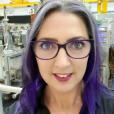

Showing 121 - 140 of 528 results

Archive
Archive of ANSTO research publications, seminars and short talks.

Role at ANSTO

Role at ANSTO
Nick is a radiation biologist who works for the NST Human Health research theme.
3D cell printing technology earns ANSTO Eureka Prize for Technology
Researchers and industry partners from UNSW Australia, the Australian Centre for Nanomedicine, Children’s Cancer Institute and Inventia Life Sciences Pty Ltd have been awarded the 2021 ANSTO Eureka Prize for Innovative Use of Technology for their method to rapidly-produce 3D cell structures
Pass the salt: can sodium power the 21st century
Atomic structure of new cathode material for sodium ion batteries helps explain long life
The science of fireworks
There is chemistry at work to help us enjoy the New Year's Eve celebration.

Deuteration Publications
Publications by ANSTO's National Deuteration Facility.
Cosmogenic field trip in the Top End

Travel Funding
The Australian Synchrotron provides funding support for successful beamtime applicants in the form of travel funding and/or onsite accommodation. Travel funds granted are to be used solely to cover the majority of the cost to travel to the AS facility. The User Office will book accommodation for interstate user groups at the onsite AS Guesthouse.
Safeguarding the future of Australia's nuclear medicine
The new facility will be built around a product line of ANSTO’s design – a new Technetium-99m generator – that will enable greater process automation than is possible with existing technology, leading to improvements in efficiency, quality and importantly the highest levels of production safety.
Advanced materials
Stable, highly conductive 2D nanosheets of boron nitride promising new material.
Research highlights how to make food different and better by design
International researchers have used nuclear techniques at ANSTO - a centre for food materials science - to develop a methodology that could assist in the design of oleogel systems for food applications.
Understanding pollutants impact
Research highlights how biodistribution of a toxic substance essential to understand all exposure risks.

Dingo - Neutron Imaging
Neutron imaging or tomography creates a whole series of three-dimensional images of an object that can be reconstructed.
Fine tuning materials for energy storage using architectural design and structural engineering
Energy researchers from UNSW have reported progress using controlled architectural design and structural engineering as a method to fine-tune materials to have simultaneous high power and high energy density for the electrochemical storage in portable devices.

Role at ANSTO
- Leader, Energy Materials Research Project
Improving carbon dating
Study helps make carbon dating a more accurate chronological tool.